Architectural Tours of India – Discover the Bystanders of Rich Indian History
The Indian history witnessed the rule of various dynasties and empires that contributed toward the blending of diverse cultures and construction of architectural landmarks. Apart from making India the land of numerous cultures, languages, religions and traditions, the country's long history has also produced treasures of monuments, forts, temples, palaces and other architectural designs.
Today, the national and global tourists travel miles to discover these eyewitnesses of the Indian history. Here is a discussion about the most popular architectural tours of India to help you have a glimpse of opulent past.
Rajasthan Architectural Tours
You can find a Rajasthan tour package that consists of trips to the royal architectural buildings of the Rajput era. Amber Fort and Jaisalmer Golden Fort are two of the majestic forts worth visiting. While the former is constructed using marble and red stone and represents the blend of Hindu and Muslim architecture, the latter is built in Rajasthani style using yellow stone.
Hawa Mahal and Udaipur Lake Palace are other two great examples of dignified architectural designs. Ranakpur Jain Temples and Singar Chanvar Temple are among the notable temples of Rajasthan known for their architectural beauty.
South Indian Architectural Tours
The South India Tours provide a good opportunity to the tourists to explore the wealth of architectural attractions located in the southern states. Charminar built in the Islamic style and the Bidar Fort built with bricks, basalt and decorative tiles are among the architectural wonders of the region.
The best part of the architectural tours of South India includes the trips to numerous temples influenced by Hindu, Jain and Buddhist architectural styles. A South India Temple Tour package helps the tourists to explore the famous architectural designs of Tirupati Temple, Meenakshi Temple, Vadakkunnatha Temple and the temples located in cities like Hampi, Badami, Mahabalipuram and Kanchipuram.
The Islamic architecture can be seen with the help of the twelve tombs of the Qutb Shahi Emperors of Golconda and many other structures located in Gulbaga, Bidar and Bijapur. Mysore is a South Indian city known for its colonial architectural style. The Amba Vilas Palace and the Lalitha Mahal Palace are two examples of colonial architecture in India.
Other Architectural Destinations
The Khajuraho Group of Monuments in Madhya Pradesh, the Champaner-Pavagadh Archaeological Park in Gujarat, Taj Mahal in Agra and the Gwalior Fort of Gwalior are some of the other spectacular architectural landmarks of India. Besides, Sun Temple at Konark, Ajanta Caves, the Red Fort and Qutub Minar of Delhi and the Rock Shelters at Bhimbetka too have a count among the popular architectural attractions of India.
A good way to organize an Indian architectural tour is using the services of an experienced tour operator. Htoindia.com is a preferred tour operator with Rajasthan tour operators, packages for South India tours and for other architectural destinations.
Article Source: http://www.articlesbase.com/travel-tips-articles/architectural-tours-of-india-discover-the-bystanders-of-rich-indian-history-3013729.html
India provide something completely different, exciting, challenging, unusual and adventurous. India Tour Packages - Hidden Treasures of India, under the exclusive category of Rajasthan Tour Package offer you some memorable historical tours. Rajasthan Tour Operators assure you the reasonable prices and a complete guided tour.














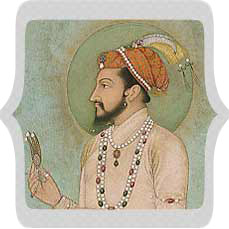 Shah Jahan was the son of Mughal Emperor Jehangir and was originally known as Prince Khurram. After being declared as the Emperor officially, he assumed the title of Abul Muzaffar Shahbuddin Muhammad Sahib-i Kiran-i Sani. However, he was known as Shah Jahan. The first aggression he faced after ascending the throne was from Jujhar Singh, son of Bir Singh Deo, the Bundela chief. After an initial surrender, he rebelled again and was finally killed by the Gonds. A major revolt for Shah Jahan came in the year 1628 by Khan Jahan Lodi, who united with the ruler of Ahmednagar and revolted.
Shah Jahan was the son of Mughal Emperor Jehangir and was originally known as Prince Khurram. After being declared as the Emperor officially, he assumed the title of Abul Muzaffar Shahbuddin Muhammad Sahib-i Kiran-i Sani. However, he was known as Shah Jahan. The first aggression he faced after ascending the throne was from Jujhar Singh, son of Bir Singh Deo, the Bundela chief. After an initial surrender, he rebelled again and was finally killed by the Gonds. A major revolt for Shah Jahan came in the year 1628 by Khan Jahan Lodi, who united with the ruler of Ahmednagar and revolted. 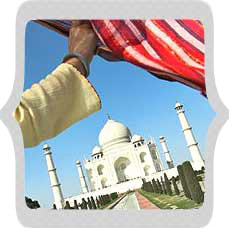 The best time to visit Taj Mahal revolves around the weather of Agra, the city of the Taj Mahal. As per the climate of Agra, the peak season for Taj Mahal visit is the winter season i.e., from October to March. Otherwise, there is no such thing as "the best time" to visit this magnificent monument. You may see Taj Mahal in any month of the year and it will come forward as breathtaking as it has always been. Infact, different seasons as well as different hours of the day lend a different aura to it.
The best time to visit Taj Mahal revolves around the weather of Agra, the city of the Taj Mahal. As per the climate of Agra, the peak season for Taj Mahal visit is the winter season i.e., from October to March. Otherwise, there is no such thing as "the best time" to visit this magnificent monument. You may see Taj Mahal in any month of the year and it will come forward as breathtaking as it has always been. Infact, different seasons as well as different hours of the day lend a different aura to it.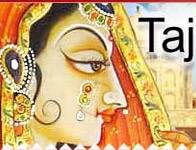
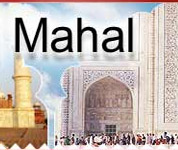
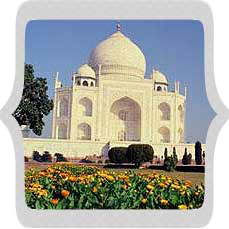
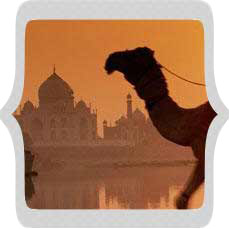 The Taj Mahal, an embodiment of love and romance, is located in the city of
The Taj Mahal, an embodiment of love and romance, is located in the city of 










